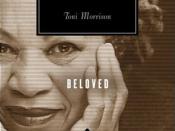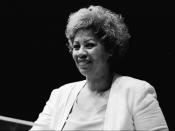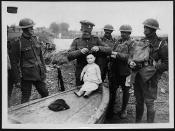In this passage, Toni Morrison instills upon the reader a sense of great irony by contrasting the feelings of the world and the little girl about the doll. The world sees the doll as the epitome of beauty while the little girl sees it as the personification of the impossible standards of beauty.
Morrison's diction in this passage serves to emphasize the differences of opinion of the doll between the little girl and the rest of the world. The world sees this doll as "[the little girl's] fondest wish,"ÃÂ the ultimate standard of beauty that would bring "great pleasure"ÃÂ to the little girl if, and only if, she is "'worthy'"ÃÂ. According to the world's view, this doll is what every little girl desires to be. It is the model of perfection that every little girl should strive for the "privilege"ÃÂ of owning. On the other hand, "the dearness, ...
the beauty, [and] the desirability"ÃÂ elude the girl who's only desire was to "dismember it;"ÃÂ simply put, "[she] could not love it."ÃÂ The little girl cannot understand exactly what it is that makes this doll as cherished as it is, and the love everyone feels towards the doll only serves to enrage her physical hatred of it. No matter how hard she tries, she cannot share everyone else's opinion of the doll. The world's opinion is not only rejected by the little girl but also strengthens her distaste towards it.
Morrison's use of imagery in this passage strengthens the sense of irony and illustrates the girl's immense disdain and morbid curiosity towards the doll. This "blue-eyed, yellow-haired, pink-skinned doll"ÃÂ was the perfect gift which, even though she could not love it, she could "examine it to see what it was that all the world said was lovable."ÃÂ This doll...


